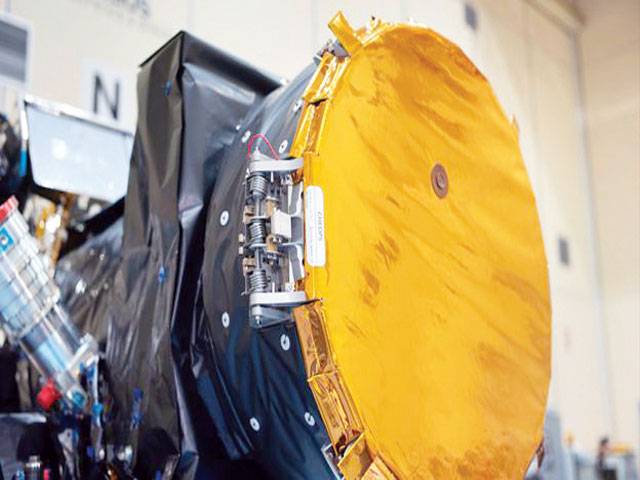LONDON-Europe will launch a space telescope to study far-off worlds this week.
Called Cheops, it’s a different kind of mission to previous efforts in that it won’t be trying to find new planets.
Rather, it’s going to follow up the discoveries of others, to see if it can reveal new insights - such as whether these distant objects are likely to be rocky or gas-rich.
The telescope will ride to orbit on a Russian Soyuz rocket from French Guiana. The mission was scheduled for an early morning lift-off on Tuesday, but a late technical glitch related to the rocket’s upper-stage Fregat booster stopped the countdown. A launch attempt on Wednesday may be possible if the issue can be resolved.
What will Cheops do?
The University of Bern, together with the University of Geneva, has provided a powerful photometer for the telescope.
The instrument will measure the tiny changes in light when a world passes in front of its host star.
This event, referred to as a transit, will betray a precise diameter for the planet because the changes in light are proportional to the surface of the world. When that information is combined with data about the mass of the object - obtained through other means - it will be possible for scientists to deduce a density.
“From that we can say something about the planet’s composition and internal structure,” said Esa project scientist Dr Kate Isaak. “And by measuring this for many different planets orbiting different types of stars, those close in and far out - we can also say something about the formation and evolution of planets,” she told BBC News.
Cheops is a project of Esa and 11 of its member states, led by Switzerland
What’s significant
about this mission?
Some 4,500 planets have been discovered since the late 1990s using a variety of techniques. But there is a feeling now that the science has to move beyond just detection; beyond just counting planets. We need to profile the objects in a more sophisticated way. Do they have atmospheres and how thick are they? What kind of clouds? Do they possess oceans on their surface? Do they have rings and moons? Cheops ought to be able to address such questions just from looking for these tiny dips in light during a transit.
The mission has been given a list of 400-500 targets to look at over the next 3.5 years. Most of these worlds will be in the size range between Earth and Neptune, sometimes called “super Earths”. From all the exoplanet surveys conducted to date, this grouping would seem to dominate the statistics.
Fingers crossed: After launch, Cheops must open a door to allow the telescope to see the stars
How sensitive is Cheops?
It will be concentrating on bright stars, but even so - its observations will still be challenging.
When a Jupiter-sized planet passes in front of a Sun-like star, the drop in light as viewed by Cheops will be as little as 1% of the total signal. If an Earth-sized planet does the same thing, the drop-off will be a hundred times smaller again, at 0.01%. “The difficulty was in building an optical system that is capable of measuring these minute light changes,” recalled Prof Willy Benz, the Cheops consortium principal investigator.
Saturday, April 20, 2024
Europe’s Cheops telescope will profile distant planets

3:56 PM | March 28, 2024
4:14 PM | March 23, 2024
Policitising Tragedy
April 20, 2024
Tehran to Rafah
April 20, 2024
A New Leaf
April 20, 2024
A Tense Neighbourhood
April 19, 2024
Dubai Underwater
April 19, 2024
Dangers of Deepfakes
April 20, 2024
Feudalism
April 20, 2024
Kite tragedy
April 19, 2024
Discipline dilemma
April 19, 2024
Urgent plea
April 19, 2024
ePaper - Nawaiwaqt
Advertisement
Nawaiwaqt Group | Copyright © 2024





